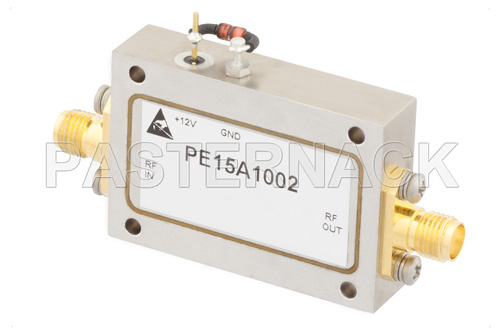 It may be surprising to some that low power system and device/component design share many of the same considerations as high power system design, albeit for different reasons. The goal of low noise design is to limit the amount of added noise, harmonics, spurs, and other factors that increase the noise floor of a signal chain. The reason for this is that any added noise, or other signal quality issues that raise the noise floor, reduce the lower end of the dynamic range and limit the sensitivity of the system. Sensitivity is essential for some applications, and is a limiting factor in sensing and communications.
It may be surprising to some that low power system and device/component design share many of the same considerations as high power system design, albeit for different reasons. The goal of low noise design is to limit the amount of added noise, harmonics, spurs, and other factors that increase the noise floor of a signal chain. The reason for this is that any added noise, or other signal quality issues that raise the noise floor, reduce the lower end of the dynamic range and limit the sensitivity of the system. Sensitivity is essential for some applications, and is a limiting factor in sensing and communications.
For instance, the sensitivity of a radar system determines the range limits of the radar. Similarly, the sensitivity of a radio telescope limits the strength of signals that can be observed from outer space. Lastly, communication links are limited in range and throughput by the sensitivity of the receivers.
In order to minimize the noise in a system, each system component in the signal chain is designed for minimum added noise. As added noise is cumulative, every signal chain element adds to the noise floor, including the power supplies that leak high frequency noise or act as antennas for high frequency interference. This is why highly sensitive receivers are often heavily shielded and placed in shielding enclosures to prevent external interference from adding noise. Often, the RF and other inputs and outputs of a highly sensitive receiver system are also filtered for noise and electromagnetic interference (EMI).
Another phenomenon to consider when designing low noise systems is thermal noise. Primarily conductors and semiconductors generate an amount of broadband noise depending on the materials temperature. The higher a materials temperature the higher the thermal noise is generated. This is why thermal management is also a significant design consideration for low noise RF systems. In some cases, such as with radio telescopes, thermal noise is such a substantial contributor of noise that critical signal chain elements, such as low noise amplifiers (LNAs) are often cryogenically cooled. Cryogenic cooling allows for key components and devices to be brought to such a low temperature that the thermal noise they generate is minimized.
A different type of noise that is becoming increasingly important to consider in low noise systems is phase noise. Phase noise is the unintended variations in frequency of a communication or sensing signal. Phase noise can lead to reduced error-vector magnitude (EVR) of communications and sensing systems that employ complex modulation schemes. Typically, the more complex the modulation scheme, the more sensitive it is to phase noise. Phase noise is also handled and mitigated differently than with amplitude noise and requires additional design considerations.
There are a variety of other types of noise, such as flicker noise, shot noise, burst noise, and avalanche noise. These types of noise are a bit more specialized and are usually component/device specific. Filters used to reduce noise in a system also sometimes help reduce noise regardless of the generator.
Learn more about Pasternack’s line of coaxial low noise amplifiers, waveguide low noise amplifiers, and low noise voltage controlled oscillators: https://www.pasternack.com/nsearch.aspx?keywords=low%20noise&view_type=grid




 Pasternack Blog
Pasternack Blog
